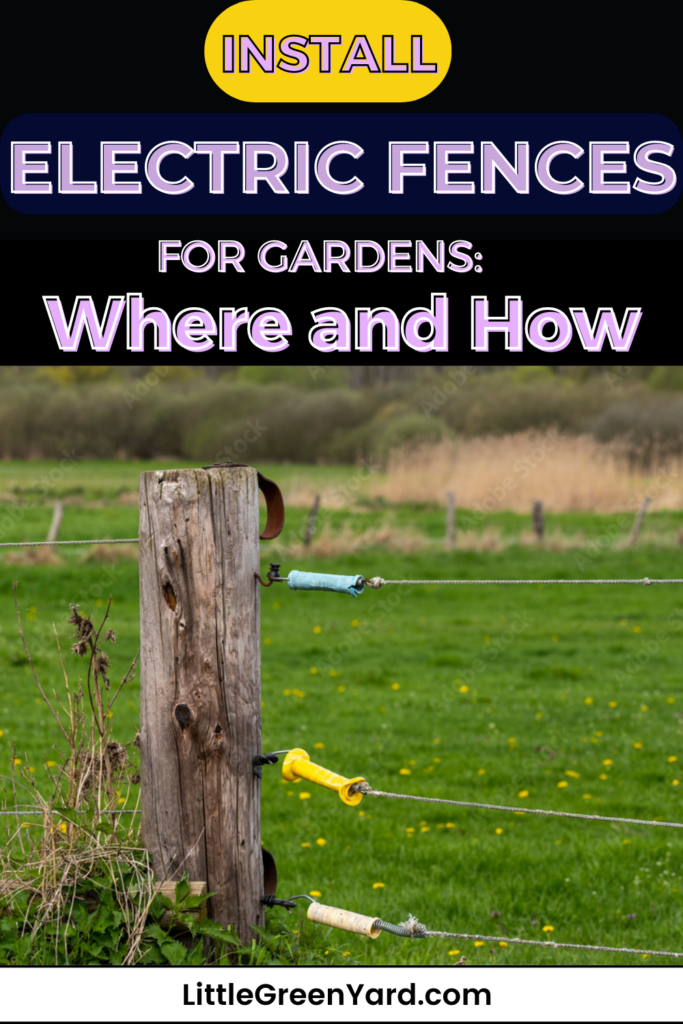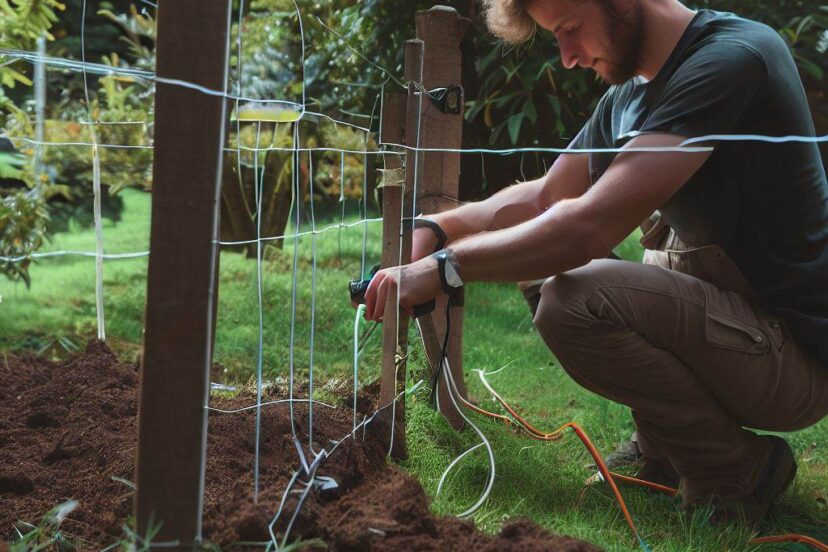Install Electric Fences for Gardens: Where and How
Gardens are not only spaces for cultivating beautiful plants and enjoying the outdoors; they are also susceptible to various challenges, such as wildlife intrusion and pet containment. One effective solution that many garden enthusiasts have turned to is installing electric fences. In this article, I will share valuable insights into the installation of electric fences for gardens, including the benefits, precautions, and suggestions for selecting the appropriate location.
Understanding Electric Fences for Gardens
Before diving into the installation details, it’s important to understand what electric fences for gardens are and how they work. Electric fences consist of a series of wires or conductive materials that deliver a mild electric shock when touched. They act as a psychological deterrent to prevent animals from entering or leaving the enclosed area.
Benefits of Installing Electric Fences
Electric fences offer several advantages for garden owners. They provide effective protection against unwanted intruders, including badgers, rabbits, and other small mammals. Additionally, electric fences help maintain the integrity of your garden by preventing pets and children from entering restricted areas. Furthermore, they are environmentally friendly and do not harm animals or pose a significant risk to human safety.
Precautions and Safety Measures
While electric fences are generally safe, it’s essential to take necessary precautions during installation and use. Ensure that the fence system complies with local regulations and guidelines. Place warning signs around the perimeter to alert visitors and prevent accidental contact. Additionally, follow proper grounding procedures and inspect the fence regularly for any damage or malfunctions.
Choosing the Right Location for Electric Fences
Selecting the appropriate location for installing electric fences in your garden is crucial for their effectiveness. Your can choose to demarcate the total perimeter of your garden. Consider the following factors:
Evaluating Garden Boundaries
Start by evaluating the boundaries of your garden. Identify areas where wildlife or pets are most likely to enter. Focus on vulnerable spots such as gaps in hedges, low fences, or areas near water sources.
Identifying High-Risk Areas
Pay attention to high-risk areas within your garden, such as vegetable patches or flower beds that are particularly appealing to animals. These areas may require extra protection to ensure the safety of your plants.
Considering Garden Design and Accessibility
Take into account the overall design and accessibility of your garden. Install the electric fences in a way that complements the aesthetics while providing optimal security. Plan for convenient access points, such as gates or openings, to make maintenance and entry hassle-free.
Installation Process
Once you have determined the suitable locations for installing electric fences, follow these steps for a successful installation:
Gathering the Necessary Materials
Before getting started, gather all the materials required for the installation. This typically includes fence posts, insulators, wires, a charger, and grounding equipment. Ensure that you have the appropriate tools for the job, such as wire cutters and a post hole digger.
Setting Up the Electric Fence System
Begin by placing the fence posts at regular intervals along the perimeter of the designated area. Attach the insulators to the posts and run the wires through them, ensuring proper tension. Connect the wires to the charger and establish a grounding system according to the manufacturer’s instructions.
Testing and Adjusting the Fence
After setting up the electric fence system, it’s crucial to test its functionality. Use a voltage tester to check if the fence is delivering the desired shock. Adjust the settings if needed and make sure the shock is sufficient to deter animals without causing harm.
Maintenance and Upkeep
To ensure the long-term effectiveness of your electric fences, regular maintenance is necessary. Consider the following aspects:
Regular Inspections and Repairs
Inspect the fence regularly for any damage, such as broken wires or loose insulators. Repair or replace faulty components promptly to maintain the fence’s effectiveness. Additionally, check the charger and grounding system to ensure proper functionality.
Vegetation Control
Keep the area around the electric fences clear of vegetation. Overgrown plants can interfere with the fence’s performance by grounding the wires or reducing their visibility. Regularly trim any vegetation that may come into contact with the fence.
Conclusion
Installing electric fences for gardens can be a practical solution to protect your plants from wildlife and control pet access. By selecting the appropriate locations, following safety precautions, and maintaining the system, you can enjoy a well-protected garden while ensuring the safety and well-being of all involved.
Electric Fences for Gardens FAQs…
- Can I install electric fences for gardens without professional help? Yes, installing electric fences for gardens is a DIY-friendly project. However, it’s important to carefully follow the manufacturer’s instructions and consult local regulations if needed.
- Are electric fences harmful to animals? Electric fences deliver a mild shock that is generally safe for animals and humans. It acts as a deterrent rather than causing harm. However, always ensure that the shock level is set appropriately and avoid using excessive force.
- Do electric fences require a power source? Yes, electric fences require a power source, typically a charger or energizer. These devices convert electricity from a standard outlet or a battery into pulses that are delivered to the fence wires.
- Can I use electric fences for gardens in urban areas? Yes, electric fences can be used in urban areas, but it’s important to check local regulations and any restrictions regarding their installation.
- Are electric fences weather-resistant? Electric fences designed for outdoor use are usually weather-resistant. However, it’s essential to choose high-quality materials and regularly inspect the fence for any signs of damage caused by extreme weather conditions.
In conclusion, installing electric fences in your garden provides a reliable and effective means of protecting your plants and maintaining control over pet access. By understanding the benefits, taking necessary precautions, and selecting appropriate locations, you can enjoy a well-protected garden space that thrives and flourishes.





